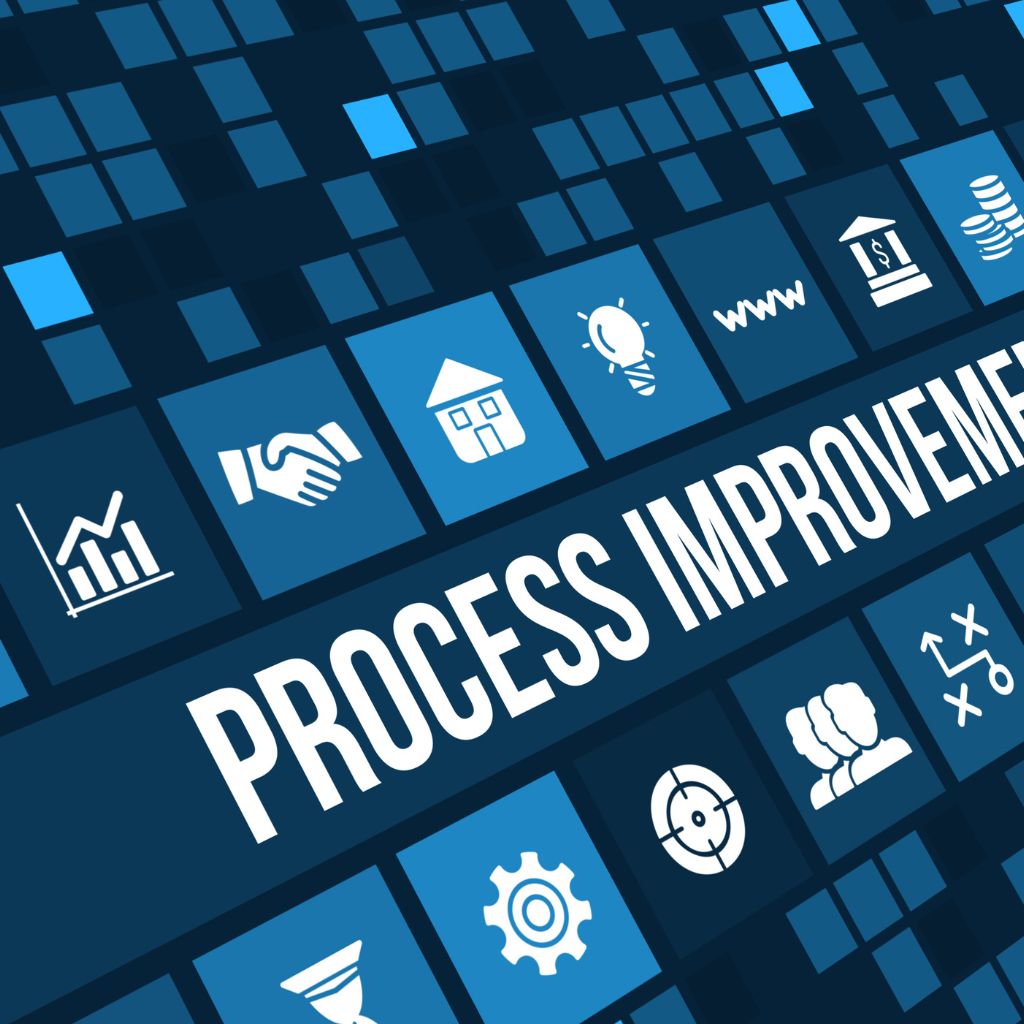Table of Contents
A recent study conducted by the Institute of Business Excellence (2024) examined the impact of Business Process Improvement (BPI) strategies on operational efficiency in small and medium-sized enterprises (SMEs). The findings highlighted that organisations implementing BPI methodologies experienced a significant reduction in operational costs and an improvement in customer satisfaction.
According to the study, “Organisations that prioritised continuous process optimisation saw a 20% increase in productivity within the first six months” (Institute of Business Excellence, 2024). Furthermore, the research emphasised the importance of employee involvement, with 78% of respondents noting that a collaborative approach to BPI led to more sustainable improvements (Smith & Taylor, 2024)
Business process improvement (BPI) is a systematic approach to enhancing organisational processes, ensuring they are efficient, streamlined, and aligned with your business goals. By implementing proven process improvement methodologies, businesses can reduce costs, improve productivity, and deliver better outcomes.
Let’s explore everything you need to know about BPI and how it can transform your operations.
What is Business Process Improvement?
Business process improvement is the practice of analysing and refining existing processes to optimise performance. It involves identifying areas of inefficiency, eliminating unnecessary steps, and implementing changes that lead to measurable improvements. The ultimate goal of business process improvement is to create streamlined, efficient processes that enhance overall business performance.
Why is Business Process Improvement Important?
The importance of business process improvement lies in its ability to help organisations stay competitive in an ever-changing market. Businesses that regularly analyse their processes and identify improvement opportunities can:
- Boost Efficiency: Eliminate bottlenecks and redundant tasks.
- Enhance Quality: Deliver consistent, high-quality outcomes.
- Reduce Costs: Streamline operations to save time and money.
- Increase Customer Satisfaction: Provide faster and more reliable services.
Common Business Processes That Need Improvement
Improving processes often begins with understanding which areas need attention. Examples of business processes that may benefit from improvement include:
- Customer Service: Streamlining workflows to reduce response times.
- Supply Chain Management: Optimising logistics and inventory processes.
- Sales Processes: Enhancing lead tracking and follow-ups.
- Human Resources: Simplifying recruitment and onboarding workflows.
- Finance and Accounting: Automating invoicing and expense reporting.
Key Process Improvement Methodologies
Successful business process improvement relies on structured methodologies that guide the analysis and implementation of changes. Here are some widely used process improvement methodologies:
1. Six Sigma
A data-driven approach that focuses on reducing process variation and improving quality. Six Sigma uses tools like DMAIC (Define, Measure, Analyse, Improve, Control) to enhance process performance.
2. Lean Methodology
Lean emphasises eliminating waste within processes while maximising value for the customer. This approach is widely used in manufacturing and service industries.
3. Business Process Reengineering (BPR)
BPR involves rethinking and redesigning core business processes from the ground up to achieve dramatic improvements in productivity and efficiency.
4. Agile Process Improvement
Agile methodologies focus on iterative changes, encouraging flexibility and adaptability in process improvement projects.
Steps to Implement Business Process Improvement
To implement a business process improvement plan, follow these systematic steps:
1. Identify Areas for Improvement
Use techniques like process mapping and process mining to visualise and analyse workflows. This helps identify inefficiencies and bottlenecks.
2. Set Clear Goals
Define the desired outcomes of your improvement efforts. Goals should align with your business objectives, such as increasing productivity or reducing costs.
3. Develop an Improvement Plan
Create a detailed plan outlining the changes to be made, the tools required, and the timeline for implementation.
4. Test and Implement the New Process
Before fully rolling out a new process, conduct pilot tests to ensure the changes deliver the desired results.
5. Monitor and Optimise
Regularly monitor the performance of the improved process and make adjustments as needed to ensure long-term success.
The Role of Process Automation in BPI
Business process automation plays a critical role in modern process improvement techniques. By using tools like robotic process automation (RPA), organisations can automate repetitive tasks, freeing up employees to focus on higher-value activities. Examples of process automation include:
- Automating customer communications with chatbots.
- Streamlining payroll with HR software.
- Enhancing marketing efforts through email automation.
Examples of Business Process Improvement in Action
1. Improved Customer Onboarding
A financial services company reduced onboarding time by 40% by automating document verification and approval processes.
2. Enhanced Supply Chain Efficiency
A manufacturing firm implemented process mapping to identify delays in its supply chain. By restructuring workflows, it cut delivery times by 20%.
3. Streamlined Expense Reporting
An organisation used business process automation to eliminate manual expense approvals, reducing errors and improving processing time.
Continuous Process Improvement for Long-Term Success
Continuous process improvement is a mindset that focuses on making incremental changes to processes over time. By fostering a culture of continuous improvement, organisations can adapt to changes in the business environment and maintain a competitive edge.
The Benefits of Business Process Improvement
The benefits of business process improvement are vast, including:
- Increased Efficiency: Improved workflows lead to faster and more reliable outcomes.
- Cost Savings: Streamlining operations reduces waste and lowers expenses.
- Better Employee Engagement: Clear and efficient processes reduce frustration and enhance job satisfaction.
- Scalability: Improved processes make it easier to scale operations as your business grows.
How to Identify Improvement Opportunities
To identify areas for improvement, ask the following questions:
- Are there steps in the process that add no value?
- Is there excessive variation in the process outcomes?
- Are employees spending too much time on manual tasks?
- Are customers facing delays or issues due to inefficiencies?
Business Process Mapping: A Critical Tool
Business process mapping is the practice of visually representing workflows to identify inefficiencies and opportunities for improvement. Tools like flowcharts and process diagrams help businesses analyse their current processes and design better ones.
Best Practices for Successful Business Process Improvement
To ensure the success of your business process improvement initiatives, follow these best practices:
- Engage Stakeholders: Involve employees and managers in identifying and implementing changes.
- Communicate Clearly: Ensure everyone understands the goals and benefits of the improvement project.
- Measure Results: Use key performance indicators (KPIs) to track the impact of process changes.
- Adopt a Long-Term View: Focus on sustainable improvements rather than quick fixes.
Conclusion
Streamlining your business processes is the key to driving efficiency and achieving your goals. If you’re ready to transform how your organisation operates, WorkDash is the solution you need.
It’s a complete business management software that does automation, process optimisation, and performance tracking, WorkDash empowers businesses to optimise workflows and identify improvement opportunities.
Book a demo today and see how WorkDash can revolutionise your approach to business process improvement.





